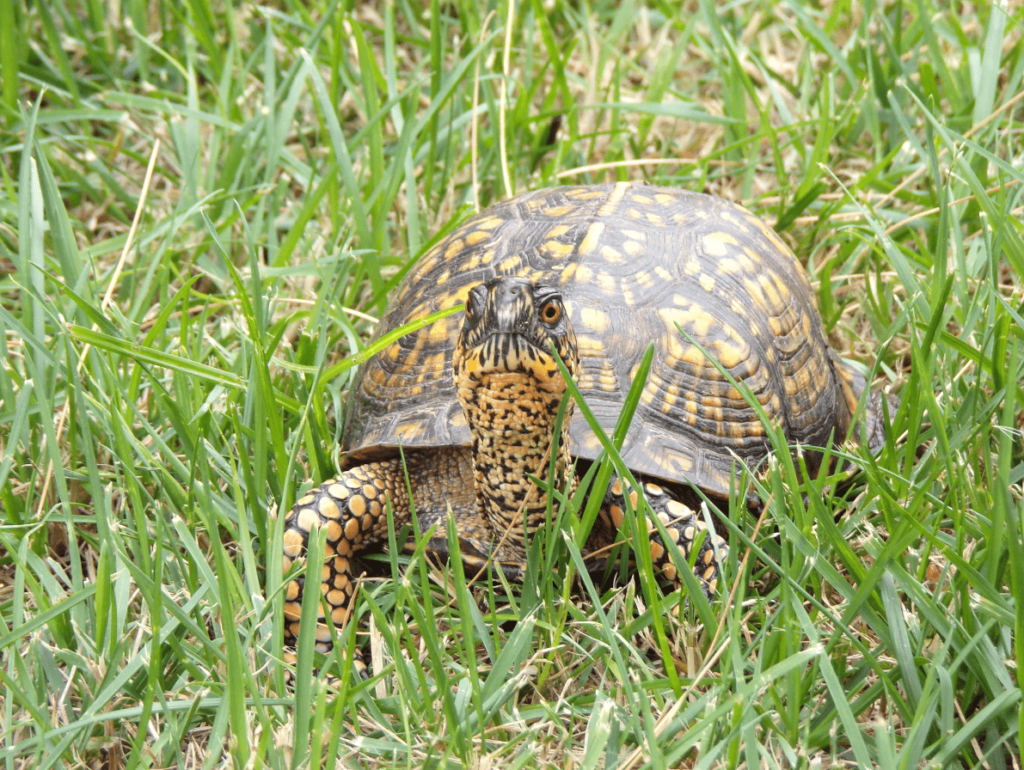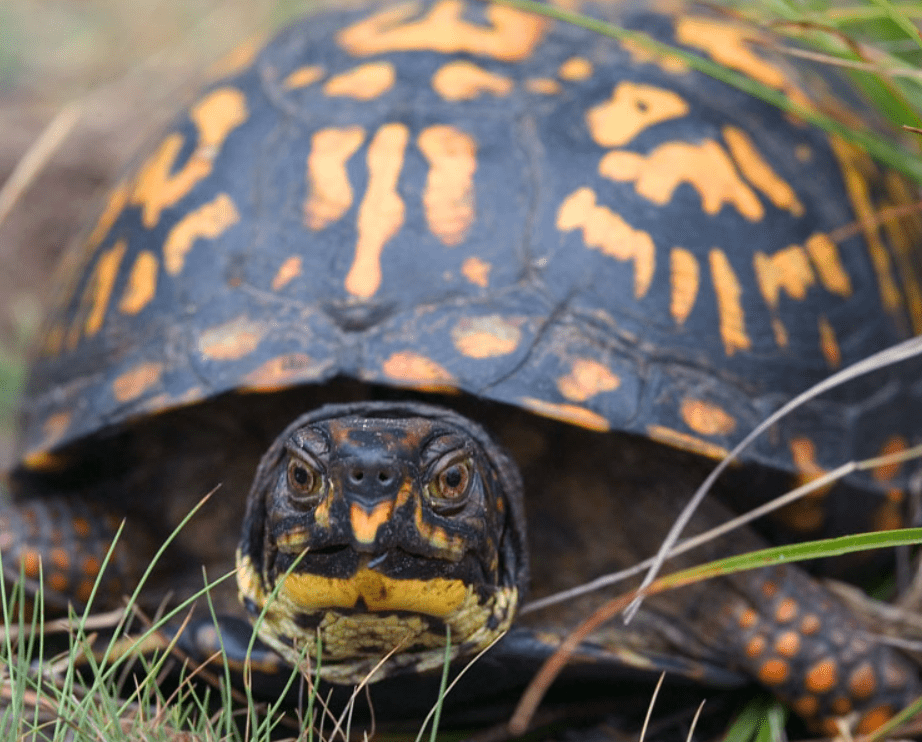Due to their cute appearance and small size, baby box turtles are one of the most popular reptiles. However, to ensure that newborn turtles grow into healthy adults, looking after turtles requires special skills and careful attention. This book discusses the important elements of raising baby turtles, such as housing, feeding, treating health problems, and more.
Table of Contents
Understanding Baby Box Turtles

Members of the genus Terrapene, including the box turtle. Mostly found in North America. The eastern box turtle (Terrapene carolina carolina) and the three-toed box turtle (Terrapene carolina triunguis) are the two species most often kept as pets. Hatching turtles is another name for baby box turtles. They are fragile and require a special habitat to survive.
Habitat and Enclosure Setup
Enclosure Size and Type
Young box turtles need a suitable enclosure for their health. A 20-gallon aquarium or plastic container of similar capacity can be used to incubate the eggs. They will need more space as they get bigger. Therefore, future planning for a larger enclosure is important.
Substrate
The enclosure substrate must resemble its natural environment. Moist and comfortable bedding is made from a mixture of sphagnum moss, coconut fiber and organic topsoil. This will allow the turtle to dig a burrow. This is normal box turtle behavior. and helps maintain moisture
Temperature and Humidity
For baby box turtles Maintaining appropriate temperature and humidity levels is important. There must be a temperature gradient inside the cabinet. With temperatures around 70–75°F (21–24°C) and basking locations between 85–90°F (29–32°C), they require a UVB light source to aid in the synthesis of vitamin D3 which is important for calcium absorption. The ideal humidity range is between 60 and 80%. This can be achieved by spraying the enclosure daily and providing the tortoise with a shallow dish of water for soaking. Maintaining proper humidity is important to avoid respiratory problems and dehydration.
Diet and Nutrition
Variety and Balance
Because they are omnivores. Baby box turtles need a varied diet to ensure they get all the nutrients they need. Include a variety of fruits, vegetables and proteins in the diet
- Protein: Serve small amounts of frozen or live insects, such as earthworms, mealworms, and crickets. You can also serve cooked chicken or lean beef to taste.
- Vegetables: Your diet should consist of green leafy vegetables such as kale and mustard greens. And dandelion leaves, climbing plants such as peppers, chayote and carrots are also suitable.
- Fruit: This is because they contain a lot of sugar and should not be present in most foods. Therefore, fruits such as melons, apples and berries should be eaten in moderation.
Supplements
Calcium and vitamin supplements are especially important for young turtles. Sprinkle calcium powder on food once a week. and take a vitamin pill once a week. This helps avoid metabolic bone disease, a common problem in reptiles.
Baby Box Turtle Health Considerations

Hydration and Shell Health
due to the risk of dehydration Baby box turtles should always have access to fresh water. The water container must be deep enough to allow it to be submerged. But it is shallow enough to allow free entry and exit. Another important component of care is shell health. Look for signs of softening, cracking, or abnormalities in the bark. Soft shells can be a sign of a calcium deficiency or other health problem. which needs to be repaired immediately by a veterinarian
Common Health Issues
Respiratory infections: If the cage is very damp or cold That may happen. Symptoms include wheezing, runny nose and fatigue. These diseases can be avoided by keeping the temperature and humidity levels within the appropriate range. Box turtles may carry internal parasites that can cause diarrhea and weight loss. You can avoid infestation by keeping the cage clean and having your veterinarian check the feces regularly. Vitamin deficiencies: To prevent deficiencies that can result in metabolic bone disease or other health problems. Make sure your diet is balanced and you take the right supplements.
Social Behavior and Interaction
In general, Box turtles live alone, especially in the first few years of their lives. They can become more accustomed to human care. They don’t necessarily socialize with other turtles, though. Gentle handling a few times each week will help your baby box turtle get used to you. But avoid handling it too often as it can cause stress.
Long-Term Care and Growth
If properly taken care of Baby box turtles grow slowly and live for decades. Their nutritional and habitat needs will change as they age. This requires changes in their care. For adult sea turtles It is best to provide them with a large outdoor habitat where they can explore a variety of environments and enjoy the natural sunlight.
Conclusion
Raising box turtles is a worthwhile endeavor that requires commitment and skill, good food, and regular health examinations. And the right place to live can help you raise healthy, happy adults from childhood. Remember that all sea turtles are different. So take care to cater to their specific needs and preferences to provide the best possible habitat.